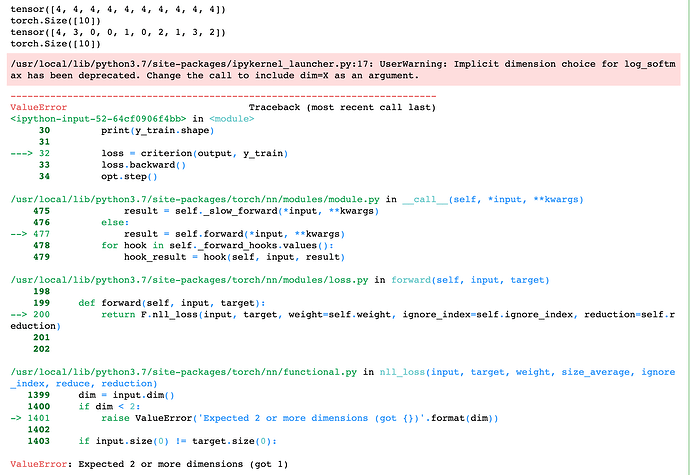How to map 1-D “y” labels (0-4) vector to logits output from NN for a Loss function?
Hello,
I am new to PyTorch and ML. After reading many forums and materials, I cannot find the best way to get a solution.
I have following INPUTS:
train file stored in h5 format with following labels:
[y] - ground truth labels (integers 0,1,2,3,4) - isolated as separate tensor for training purposes (Y), through pandas DF
[x1:x120] - feature vectors x1-x120, which gives 120 features as input vector, isolated as well for training (X1-X120 tensor coming from pandas DF)
around 45000 training instances (rows)
So I have constructed fc NN like this:
L1 - [120-100] nodes for input vectors
L2 - [100-50]
L3 - [50-20]
L4 - [20-5] nodes for outputs, either logits or probabilities after applying softmax
Each layer being activated through ReLU, no softmax at the end in 1 version, just the output itself (logits, right?)
class Net(nn.Module):
def __init__(self):
super(Net, self).__init__()
# an affine operation: y = Wx + b
self.fc1 = nn.Linear(120, 100)
self.fc2 = nn.Linear(100, 50)
self.fc3 = nn.Linear(50, 20)
self.fc4 = nn.Linear(20, 5)
def forward(self, x):
#x = x.view(-1, 120)
out1 = F.relu(self.fc1(x))
out2 = F.relu(self.fc2(out1))
out3 = F.relu(self.fc3(out2))
y_pred = self.fc4(out3)
return F.log_softmax(y_pred)
#return y_pred
model = Net()
print(model)
What I am struggling with, is how to convert either logits or 1-D y labels array to match dimensions for CrossEntropyLoss or even NLL when applied Softmax?
It gets runtime error - multi target not supported etc… (1D vs 5D)
Shall I convert ground truth labels to one-hot coding, having some array like:
y
[00100] = 2
[01000] = 1
[00001] = 4
???
My Data Loader:
dataset = TrainDataset()
train_loader = DataLoader(dataset=dataset,
batch_size=batch_size,
shuffle=True,
num_workers=2)
My Training loop:
///
criterion = torch.nn.NLLLoss()
#criterion = torch.nn.CrossEntropyLoss()
for epoch in range(num_epochs):
for batch_idx, (x_train, y_train) in enumerate(train_loader):
x_train, y_train = Variable(x_train), Variable(y_train)
opt.zero_grad()
output = model(x_train)
print(output)
#y_train = y_train.squeeze_()
loss = criterion(output, y_train)
loss.backward()
opt.step()
print(‘Epoch %d: Loss %.5lf’ % (epoch, loss))
///
I tried to squeeze_ the y labels, but it does not make sense and I get same values over iterations…
I am really lost :(( Can you help?

